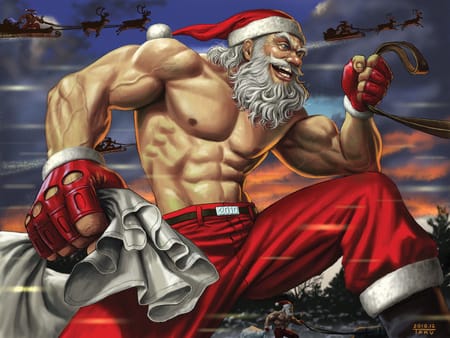Have a very Merry Christmas and a fact-filled New Year!
Philippa Skett, signing off for Christmas with some festive facts

It’s beginning to look a lot like Christmas… isn’t it? No doubt you are reading this already snuggled up warm in your knitted jumper complete with reindeer design, sipping mulled wine and getting positively drunk on the festive cheer. Of course you aren’t; you are like any other Imperial student- walled up in the Library, slowly chewing your arm off. However, who said science can’t be joyous? Spice up your Christmas dinner banter with some of these festive facts, or use them to tell that particularly annoying younger relative once and for all why there is (probably) no Santa.
First off, you need to go out and buy that perfect Christmas tree. It is environmentally better in the long term to buy a real tree, as fake ones are made primarily out of polyvinyl chloride, non-renewable and a producer of carcinogens when synthesised. They may also contain lead and other additives that could lead to health impediments. Real trees can look worn and lose their needles very quickly, but studies show that if you maintain your living room at around a 90% humidity level, there is a fivefold increase in needle retention, as this reduces water loss and any xylem tension that causes the needles to drop off. You might want to give your Christmas party a tropical theme this year…
Still not a tree fan? Mistletoe may be the hemi-parasitic evergreen for you. Viscum fraxini, an aqueous extract from mistletoe species Viscum album L., may have medical potential. V album L. is known to produce proteins that target and kill rapidly dividing cells — those that can lead to cancer. The serum may also be used in the future to induce cell death of immunologically important natural killer cells, which could prove useful in treating autoimmune diseases such as rheumatoid arthritis. However, don’t go chewing these plants if your joints start to feel sore — ingesting V. album L. can cause stomach pain, diarrhoea and a low heart rate.
Speaking of ingestion, how many mince pies do you think Santa Claus really eats throughout his one night of employment per year? Take Britain, with a population of 63.1 million. This includes 10,854,360 children. Removing those who won’t be celebrating Christmas or were on the naughty list (based on the number of first time entrants to the criminal justice system) then leaves us with 10,240,466 children in total. With the average number of children per household being 1.8, and assuming in this waste-conscious time we only leave one mince pie per household, that is still 5,689,148 mince pies Santa needs to get through. That is 1,422,286,933 calories. Santa effectively puts on around 29,000 stone from giving presents to English children alone. Santa is probably dead from obesity-related diseases. Sorry kids.
Even if Father Christmas did slim down over the year, reindeers still could not pull him through the sky. They are particularly unsuitable for flight because mammals are evolutionarily derived from earlier tetrapods; for reindeers to even have wings the development of another set of limbs, bringing their grand total to six, would have had to occur. Reindeer instead have four limbs developed into large circular hooves used to scrape snow from lichen and to spread out their weight, which are hardly aerodynamic. Also, on average, they weigh around 350kg and do not feature hollow bones, or a respiratory system based around four air sacs (as seen in birds) that acts a lot like bellows. Reindeer are destined to stay on the ground.
On a cheerier note, there is always the potential for theoretical physicists to fill in the gaps, with wormholes or space-time warping having the potential for Santa to deliver all the presents in the allotted amount of time. Something some of you could consider for Ph.D research? Lastly, you will also be pleased to know that the Met Office predicts that more than half of all Christmases recorded should turn out to be a “White Christmas,” with 38 out of the last 52 years Christmas days seeing snow. So there is still hope yet for that traditional Christmas card scene for when we take a revision break sometime this holiday.




